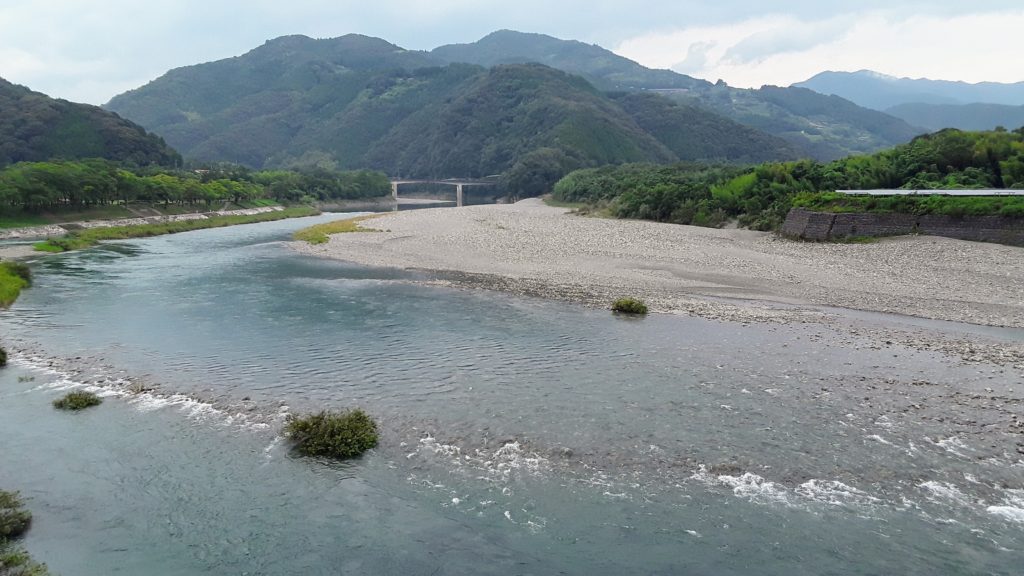
I have been in Ochi-town for just over two weeks now, and in some ways, it feels like I have been here a long time because time seems to go more slowly here.
There is a whimsical chime that sounds over the city at 6 am, 12 noon, 5 pm and 9 pm, with announcements when there is pending danger like an approaching typhoon. This, and the rolling green hills and valleys, with thick white mist arising, and winding roads, makes me think I am living in a Dr Seuss Whoville.
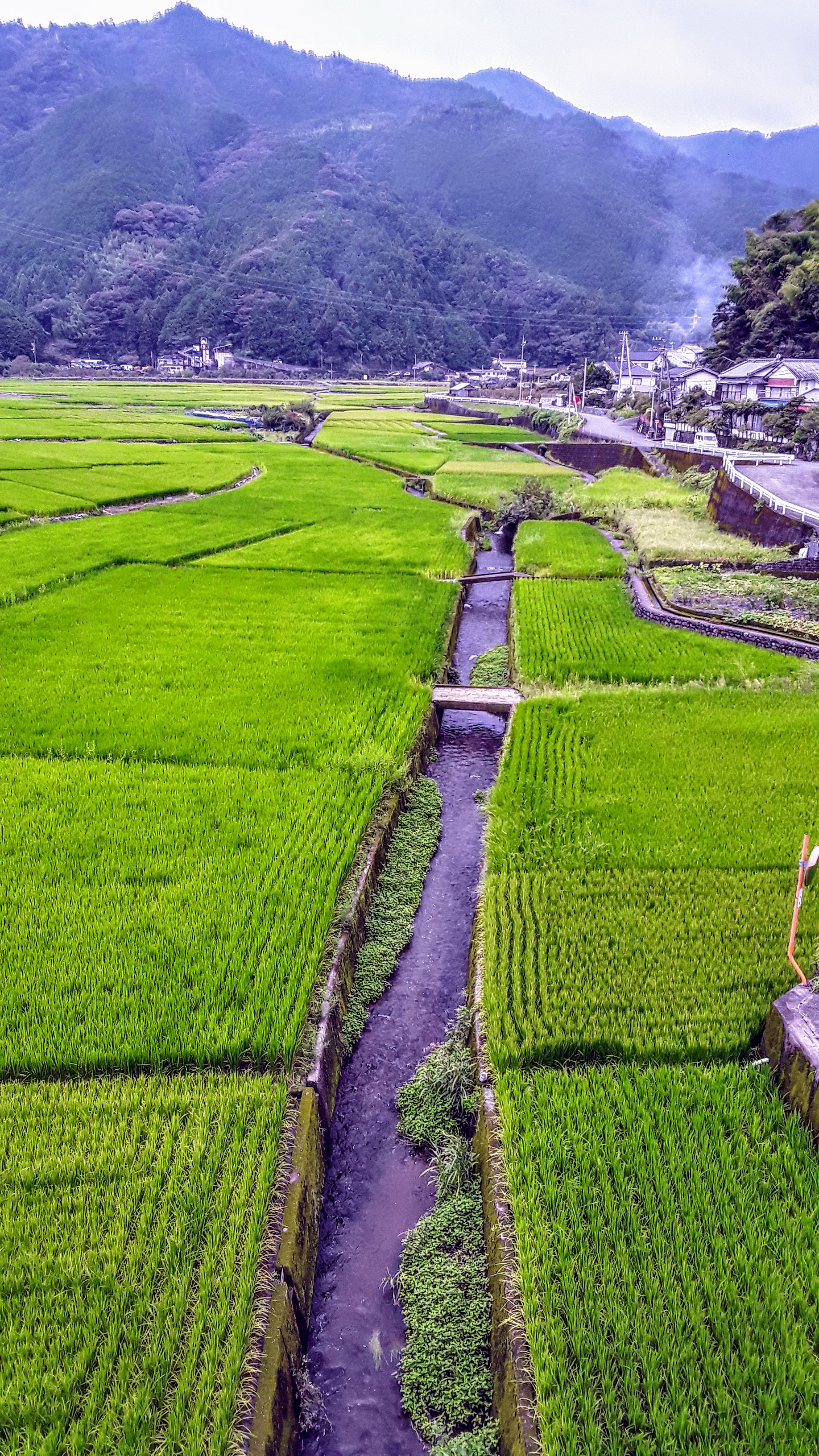
Before coming to Ochi-town, I had many perceptions about what the inaka or backcountry would be like. The only backcountry I knew was in Canada, with little in the way of conveniences, and where you need to drive into the city to get the supplies and services you need. I was afraid I would be stuck in a place with nothing, and I would feel isolated and trapped.
The reality is far from the truth. I was surprised to find an Ochi that I never imagined.
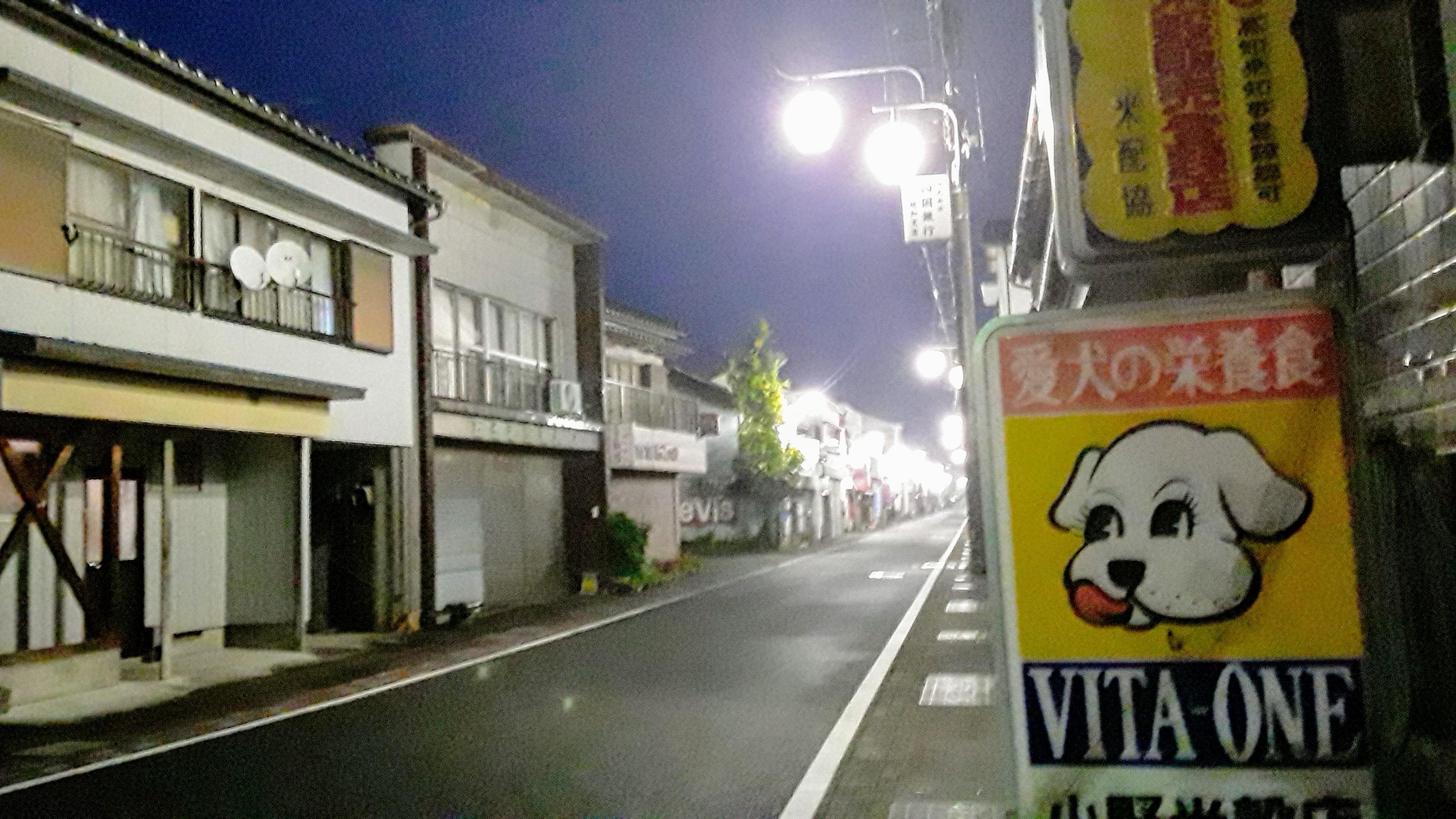
main street of Ochi-cho
There is the traditional aspect to the town with the dark wooden houses, old storefronts, and stone pathways. Small storefront operations package fresh tofu and rice and make tatami mats. Many stores are old and bare-looking, but they provide residents with the basics of living such as hardware, clothing, shoes and services like watch repair, hair salons and barbers.
Along the narrow main street, there are antique white glass streetlights. Also lighting the road are modern vending machines selling drinks, which are cold in the summer and change to hot when the weather changes, along with cigarettes and alcohol. The beautiful Niyodo River, one of the clearest and cleanest in Japan, meanders through the back of the town with the rolling green mountains in the backdrop.
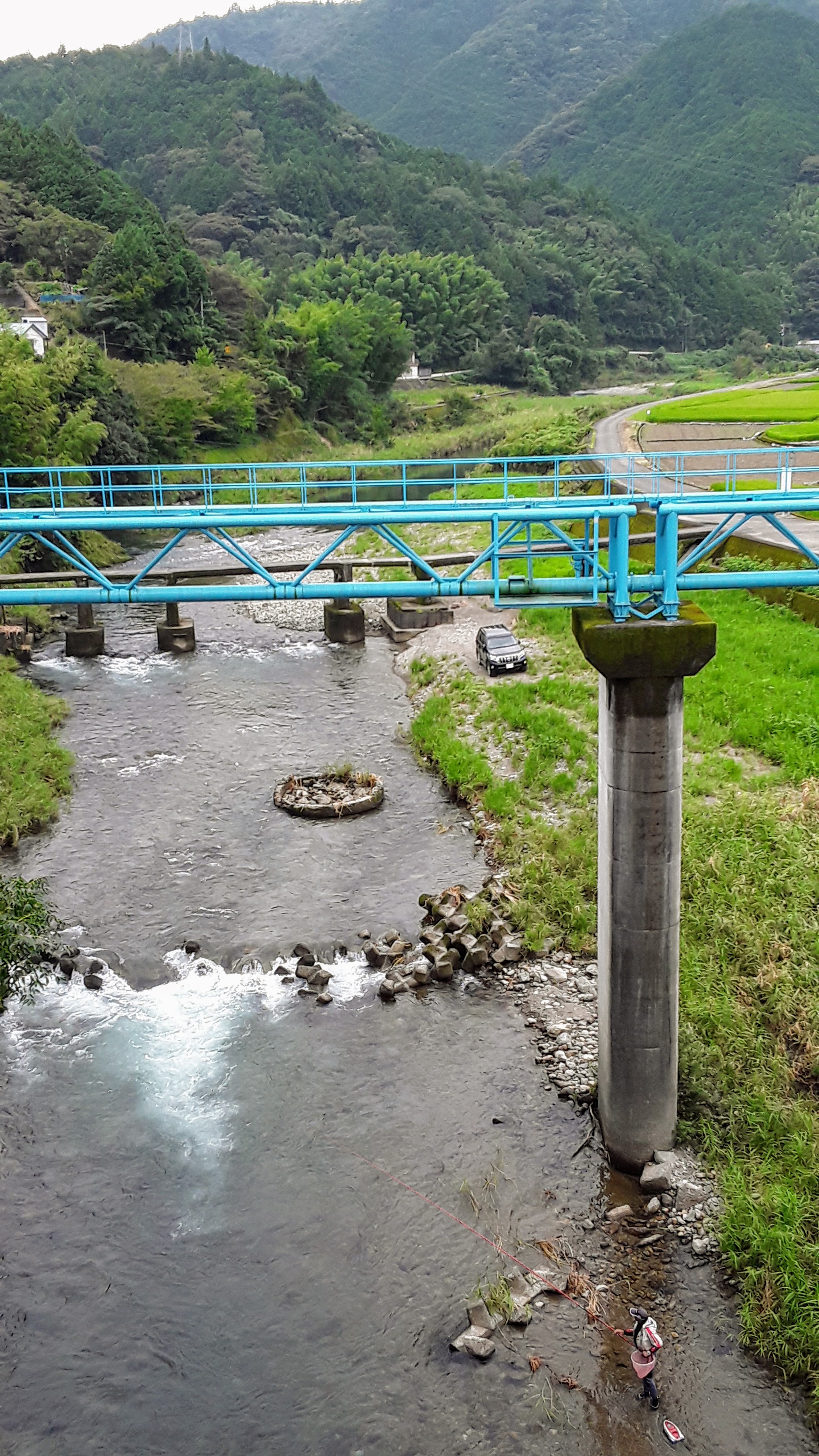
They say you will never go hungry or thirsty in Japan. In the backcountry, you can feel the importance to the Japanese of good food and drinks, shared with friends. There are many types of wonderful food establishments, even in a small town.
There are some modern supermarkets of differing sizes, stores selling produce from local farms, a small French bakery, a new mini modern-looking library, several hospitals, gas stations and two pachinko parlours.
I was happy to find near me the Lawson convenience store, which are called “kombini” in Japanese. Foreigners can easily withdraw money from the ATM (not all ATMs in Japan accept international cards in a very cash society). You can also photocopy, fax (faxing is still alive and well here), pay bills, and buy basic supplies and tasty prepared food.
For a small town, there are a few restaurants that serve surprisingly high-end food in individual tatami rooms for special occasions, along with cafes and kissaten. What is a kissaten?
I hadn’t heard the term before I came to Ochi. First, I love words, and kissaten is now one of my favourites. A kissaten translates to “tea-drinking shop” and is an old Japanese style tearoom that is also a coffee shop. They are locally owned, and often serve light meals and refreshments. In most cities, they are being overtaken by cafes chains that are seen as more stylish, like Starbucks and Japanese brands like Tully’s and Doutor.
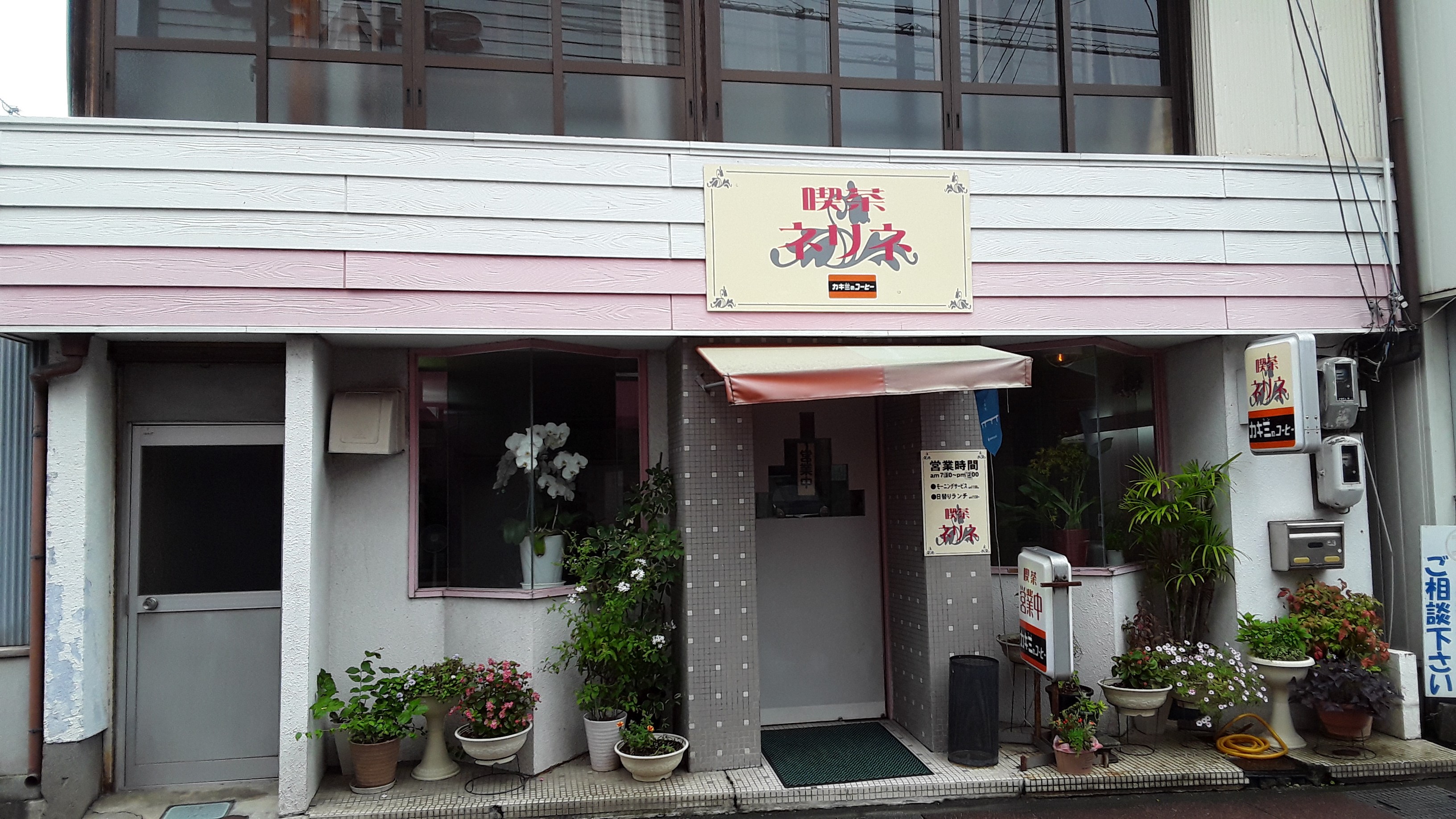
Nerineh kissaten in Ochi-cho
I love the kissaten in Ochi town called Nerineh, which serves lovely home-cooked Japanese meals by a talented, passionate and kind woman and her husband. When I go there for lunch, the owner and her husband appear with a tray of small dishes, made with fresh produce from local farms, and it’s delicious. It is open from the early morning until the early afternoon only, with most of Ochi’s ageing population disappearing in the afternoons to go to their homes and early to bed.
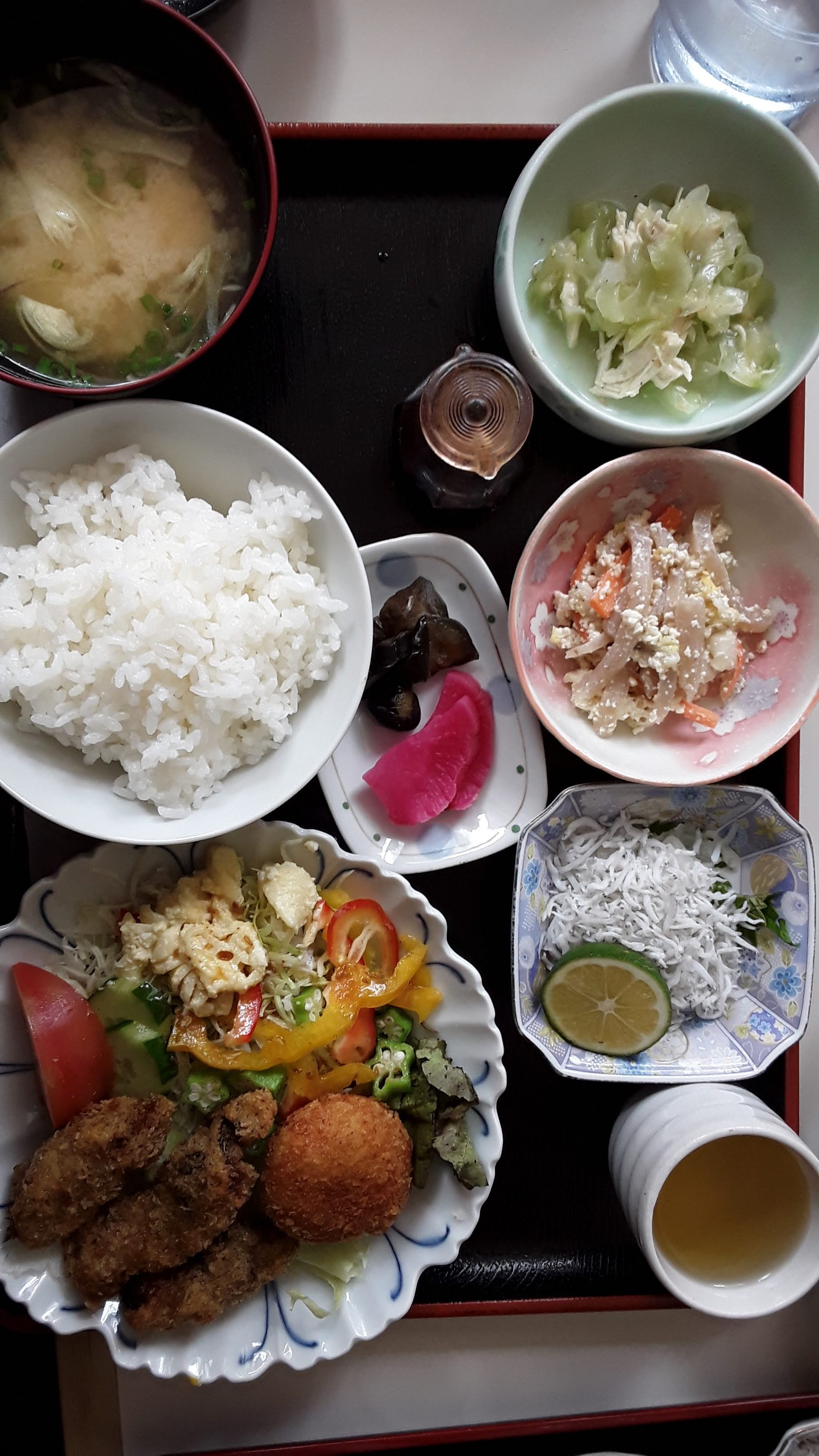
There are also izakayas, which are informal pubs. They seem to be popular with the older populations during the day, and some with karaoke so that people can sing songs that they remember from their younger days. Residents grow old in Ochi but don’t need to feel old.
The population in Ochi-town tends to be older and is declining. One of the residents, now 61, says that the community was over 13,000 when she was a child but has decreased to 5,582. This is caused by the declining birth rate, younger people leaving for the city, and the population getting older.
This demographic shift is an issue all over Japan, sometimes eliminating entire towns. The same change in demographics will be affecting most developed nations in the next 30–50 years, including Canada and the US. Therefore, Japan is an excellent country to watch to see how they address this challenge.
Every day I am surprised at what I find in Ochi.
When I told a local official that I was surprised by what I found here, he replied that Ochi is a “mini-city”. I asked him if this was the same across Japan. He said that it is. The towns have conveniences and services for the population. Even for people that live far up the mountains in Ochi without transportation, he said that the region sends cars to sell them food and shuttles residents back and forth to the hospitals for appointments.
What I find most refreshing and soul-enriching being in Japan is that services are set up with truly people in mind first. It’s not the “build it, and they will come” philosophy that we have in North America. I find that human interaction and connection is essential to the Japanese who don’t hug or touch, preferring bows.
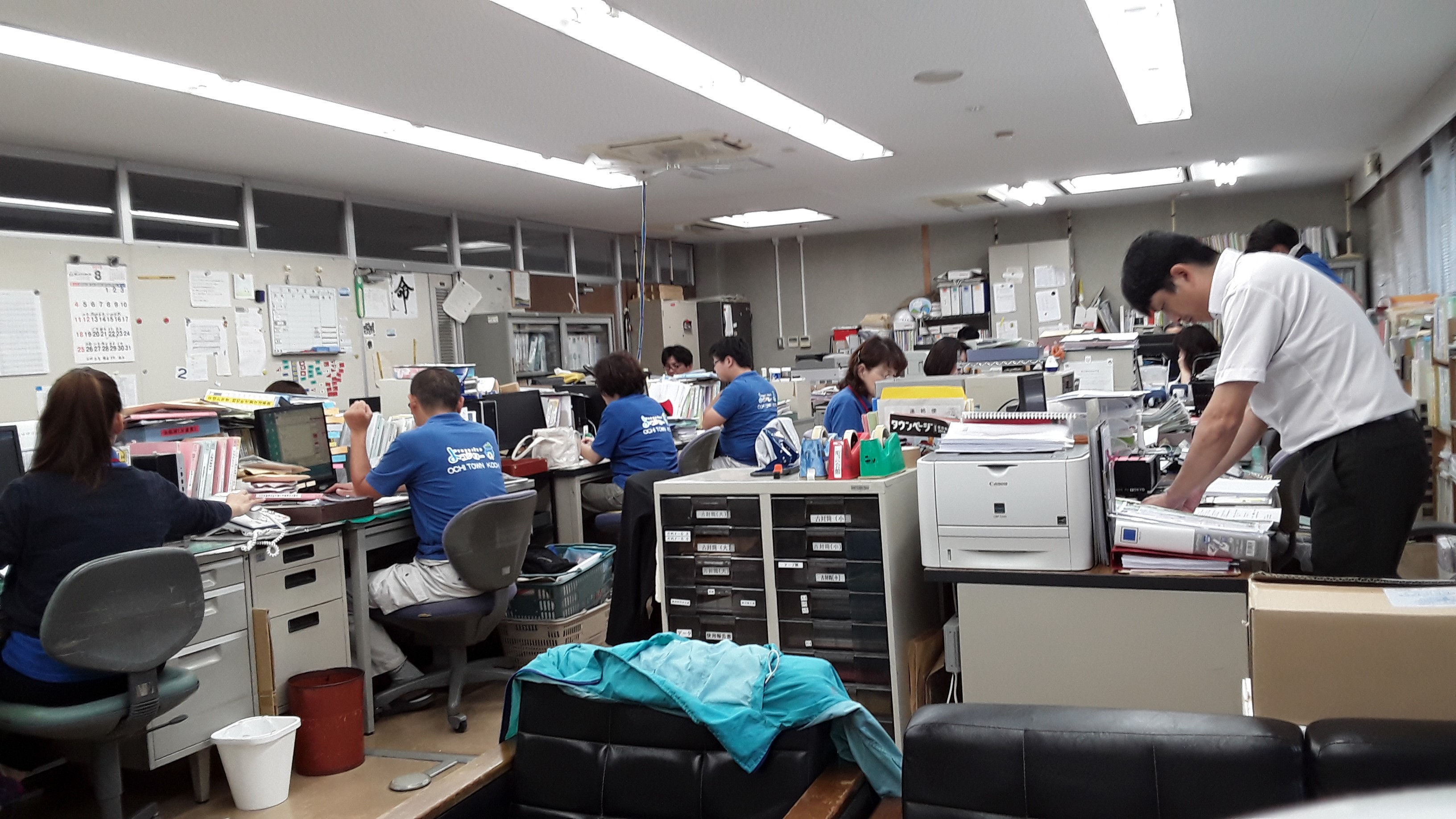
In the office, greetings at the start and end of the day are essential to whomever you meet. When leaving the office during the day, you are expected to announce to your colleagues where you are going. You can’t slide in and out of our office without saying anything, as we might do back home. This might seem too rigid and restrictive to us back home, but on the flip side, when you are leaving for a trip, the entire office will take the time to wish you well. It is a “we” culture after all
Despite Japan being known for its shiny new electronics and high-tech, the typical Japanese office is low-tech. The use of personal communications is preferred, and paper, faxing, and the phone is used more than electronic communications. I was surprised to see a rotary dial phone still being used in one of the community tatami rooms. This is part of the Japanese philosophy too. If something works and they can use it, it would be wasteful not too.
I am now an official resident of Ochi-town! There was a lengthy administrative process and a lot of help from the Japanese government ministries, the Ochi Board of Education (BOE) and local government offices, staff and friends.
All the forms were in Japanese, and sometimes I could write my name and address in English, but most of the time, I had to write in Japanese. This is difficult because I don’t write in Japanese kanji, which are the Chinese characters that are used in the Japanese writing system. There are about 50,000 kanji characters. The average Japanese knows about 2,000 characters and two alphabet scripts called hiragana and katakana.
At the post office, they insisted that I write my name and address in Japanese kanji. My supervisor wrote it out for me. The staff person seemed to enjoy observing me as I copied each character carefully from what was written for me. It was a slow and stressful process for me, especially as I felt her eyes on me.
When I finished, I felt like I was Rocky Balboa, from the movie Rocky, who ran up a flight of stairs and yelled out in celebration when he arrived at the top. Instead, I said, “dozo”, and handed my document to the staff person who smiled at me, and said I did an excellent job in Japanese.
Here’s what some of my address looks like in Japanese, so you get the point why I was sweating: 高知県高岡郡越知町越知甲
On my first day in Ochi, I filed my official moving in notice to the town hall. While I was there, my supervisor introduced me to the mayor and the staff on different floors, inviting me to say a few words in Japanese to the sections. In exhaustion, confusion and sweating in my suit through the high heat and humidity, I did my self-introductions in Japanese, which were awkward and blundered for the most part. This is one of the rights of passage for all JETs that come.
Self-introductions to officials and staff when you visit an organization are part of the Japanese culture, and in a small town even more critical. I must introduce myself in Japanese to student and teacher assemblies when they come back next week from their summer holidays. The school year starts in April in Japan, and in August they have a short summer break.
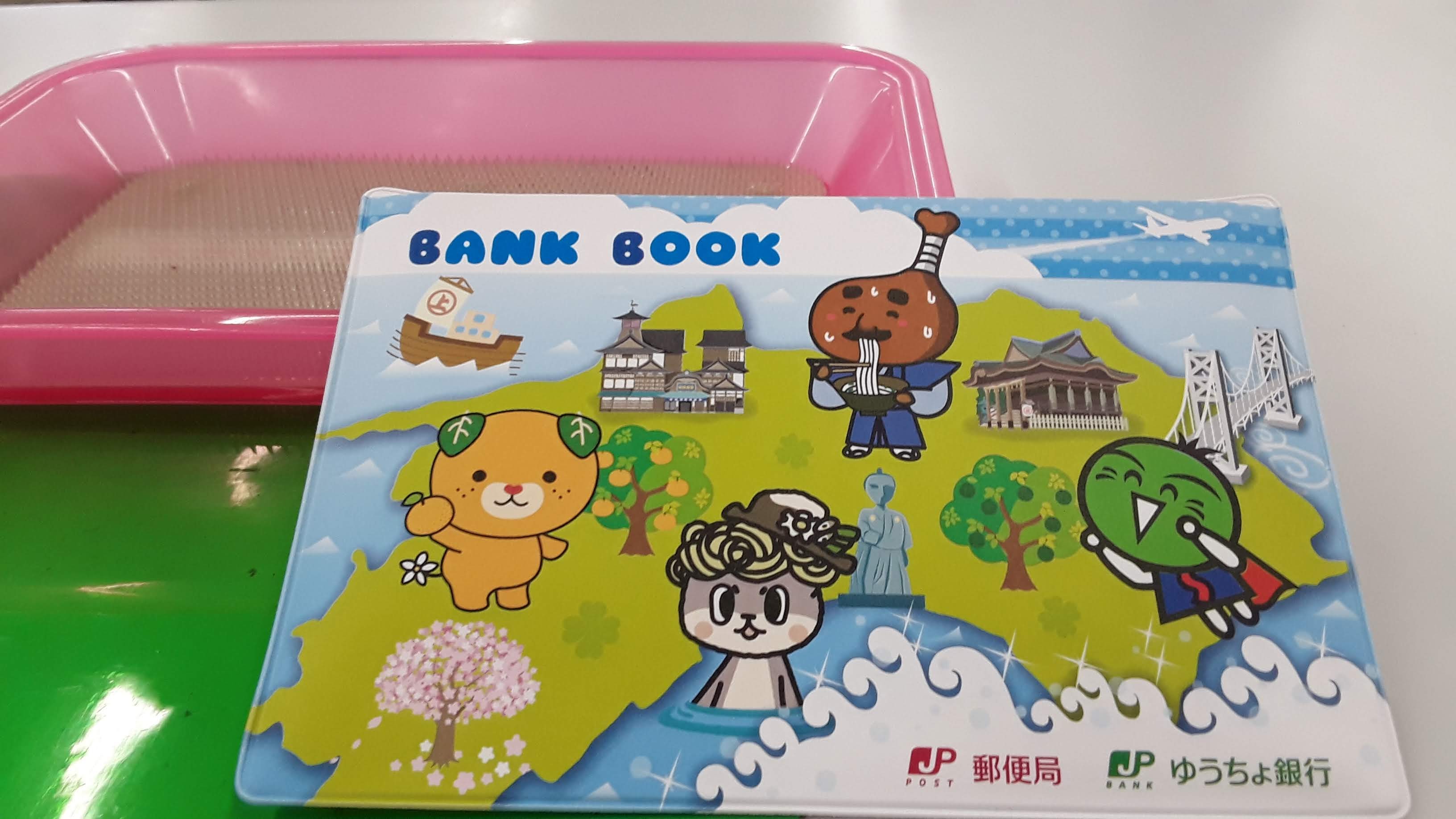
I opened an account at the bank, which took a few hours of patience as my supervisor helped me fill out forms, and we waited for my account to be processed. I also opened a Japanese Post Bank Account at the post office, from where I do most of my banking. I still don’t understand the difference, but I got to choose a kawaii or cute bank book because Japan always has a cute option for most things. It is a kawaii nation after all, with even construction signs that resemble cute animals.
My bedroom apartment and utilities have been arranged by the BOE. In many cases, JET delegates take over the apartments from former JET who have stayed there. The BOE handles the negotiations with the landlord and arrange for the utilities to be transferred to us.
The administration and paperwork continue for me to become a full resident in Japan and Ochi, which is business as usual for the Japanese and is often confusing and bewildering for foreigners. The best we can do is smile and be grateful that we are being supported.
In just over two weeks, I have been invited to three nomikai or drinking parties to welcome me to Ochi. In my welcome letter, there was standard wording about a job assignment in terms of where I would be working, when, and duties. I stopped when it said, “you will be invited to many drinking parties at night.”
What? This is the first time I’ve had “drinking parties” part of my job description! I asked my Japanese friends. They confirmed that nomikai are an essential part of the work culture in Japan, especially in smaller areas, to bond with coworkers. They are not considered private and non-work related.
Employees usually gather at a restaurant and are seated at one large table. I wasn’t looking forward to having my colleagues getting shit faced and seeing them become friendly toward me induced by alcohol.
So far, with the three I have gone to, I was pleasantly surprised. The nomikai have been more civil than I thought. This is probably because of the stereotypes I’ve seen on TV with office employees drunk and staggering home. I also have seen many very drunk people riding the subways in Tokyo and some lying on the platforms in their drunken state.
For nomikai, there is an official routine and several long-standing traditions. The organizer opens the event, welcoming guests and announcing the reason and rules, like the start of a game. People speak, and the drinking starts with a kampai or toast. There is much eating and drinking.
In Ochi style, many big plates of food are served with smaller dishes to eat from. Serving other guests, food and drink, before yourself is part of the tradition. There is an official closure in about two to three hours by standing up and clapping in unison. The Japanese are organized and disciplined, even with their drinking parties!
Attendance at a nomikai does not necessarily imply that a person will drink any alcohol. However, attendees generally pay a set amount for the food, drink, and venue regardless of what they consume. Also, if people are driving their cars or bikes home, they stick to non-alcoholic beverages since there is zero-tolerance by police for driving your car or bike after you’ve had any alcohol.
I am hesitant to write more about Ochi now because I know my impressions will probably change over time. But, I know you are curious about where I live. And I wanted to reflect on my arriving and settling in Ochi as a light marker in the sand that will evolve and may disappear as I become part of Whoville.
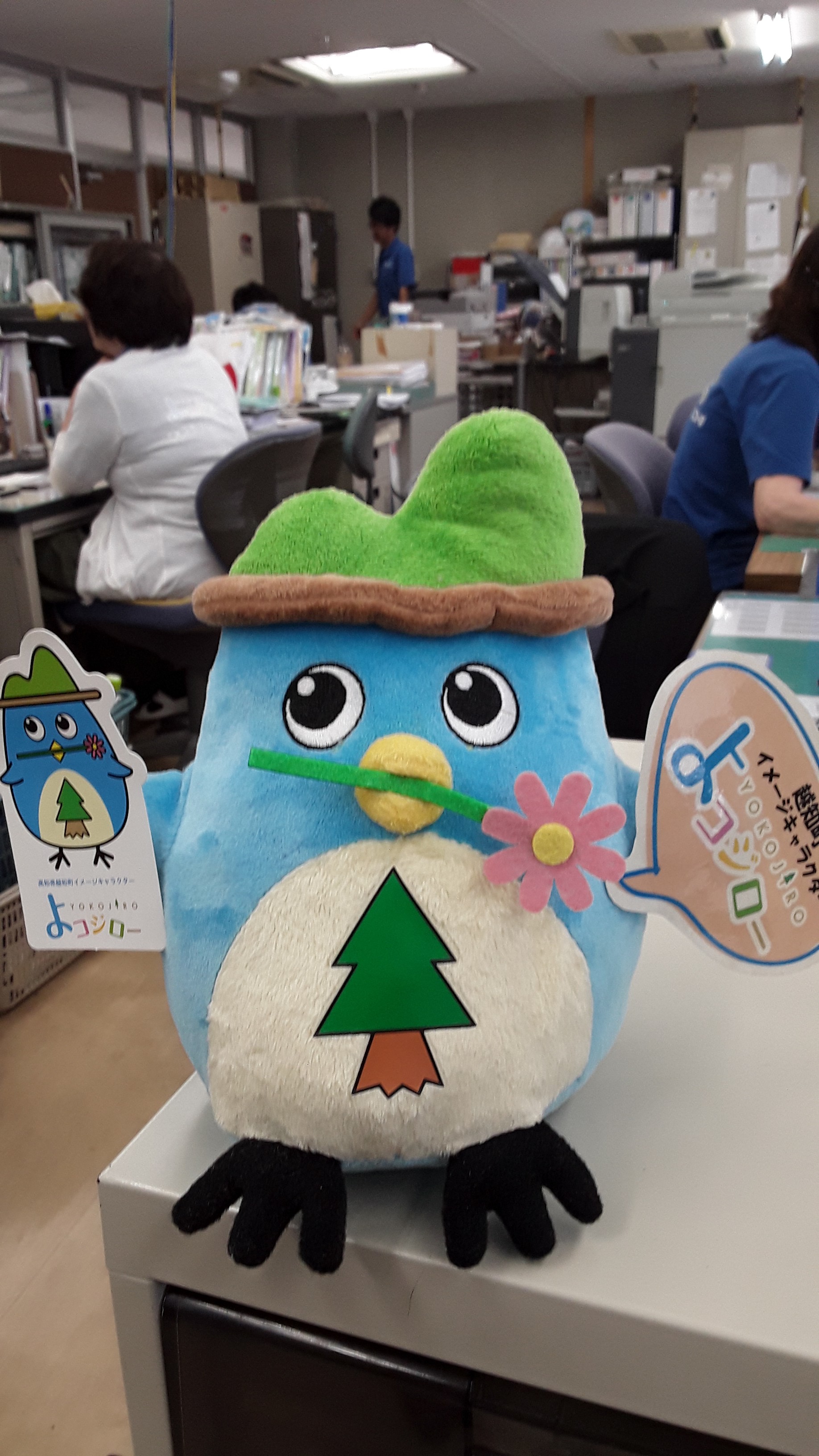
The mascot, almost every town has one, of Ochi town is called Yokojiro. His head represents the Yokogura mountains, the blue represents the blue waters of the Niyodo River, there is a cedar tree on his belly, representing the abundant cedar forests, and he is holding a Cosmos flower, which is the flower of Ochi and there is an annual Cosmos flower festival.



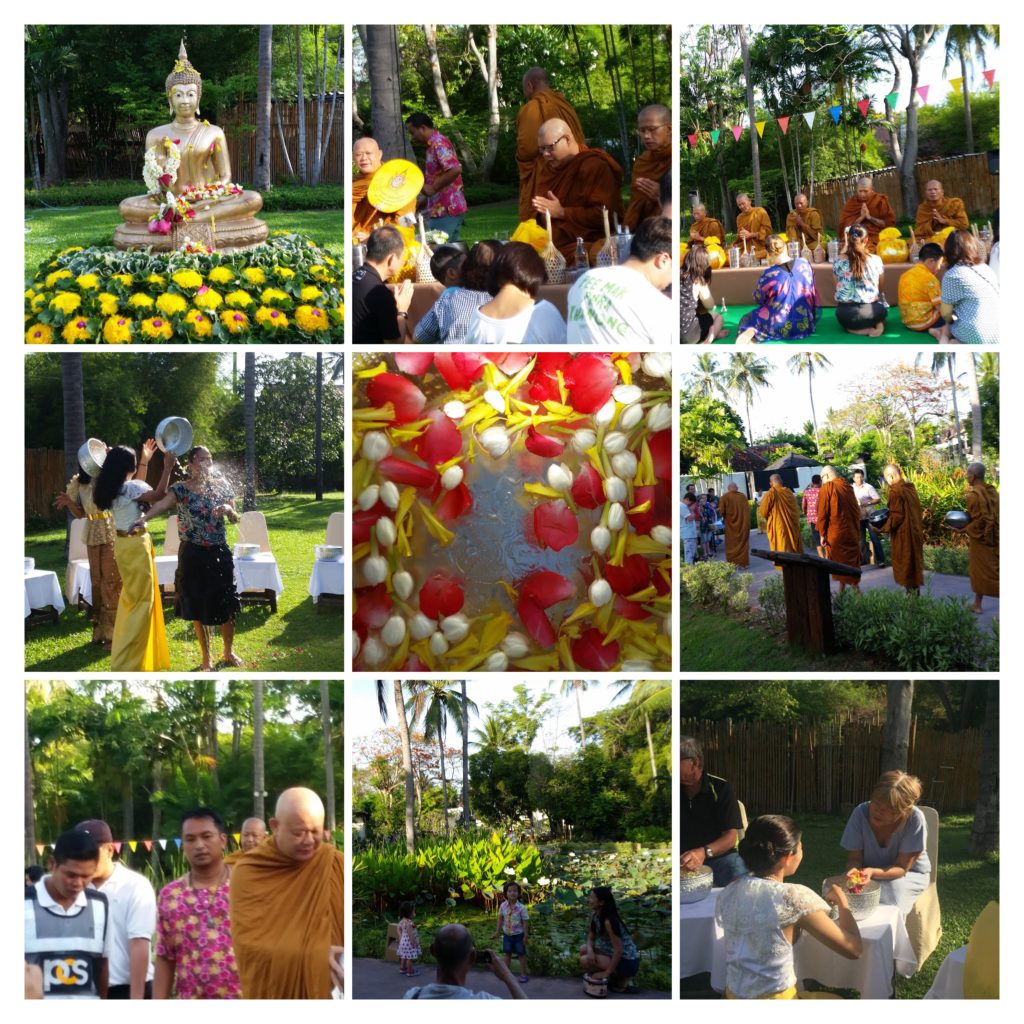
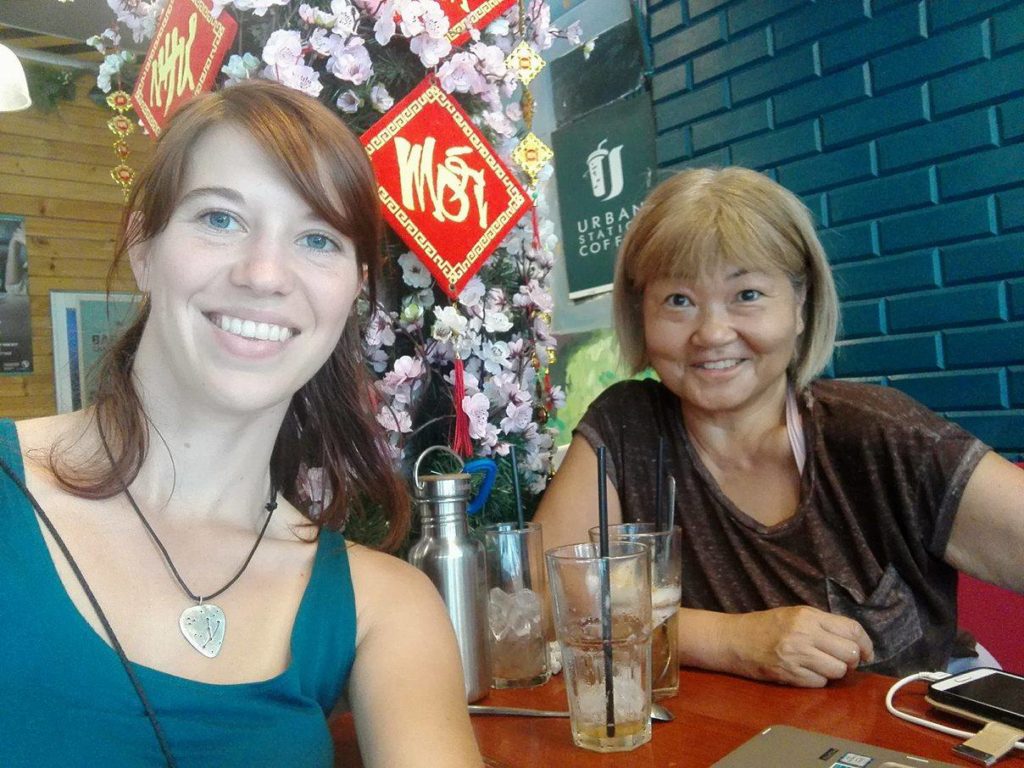
0 Comments